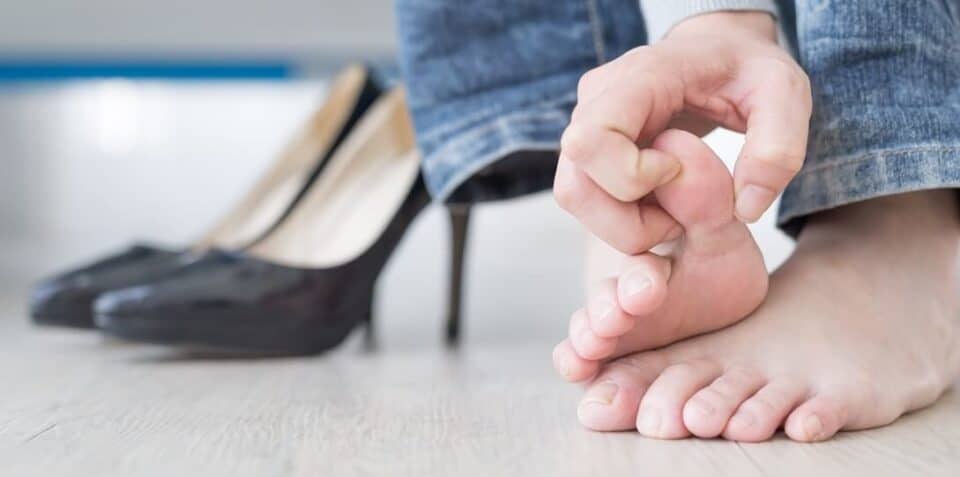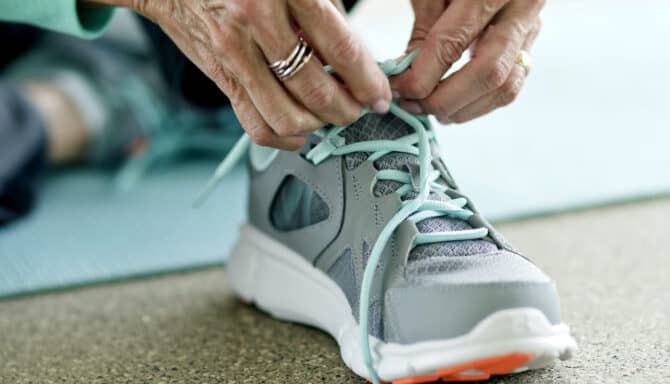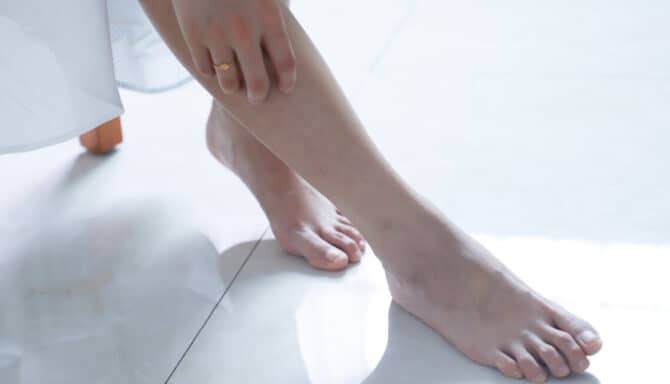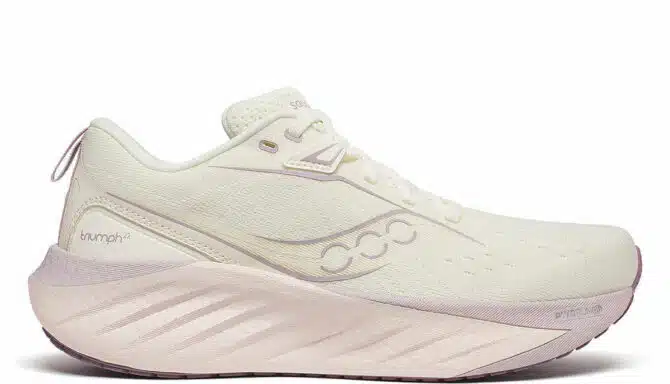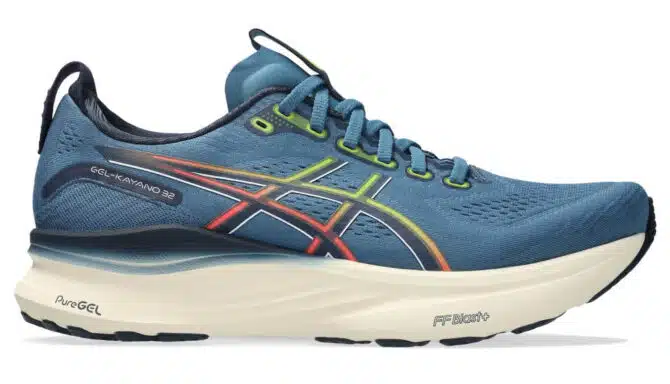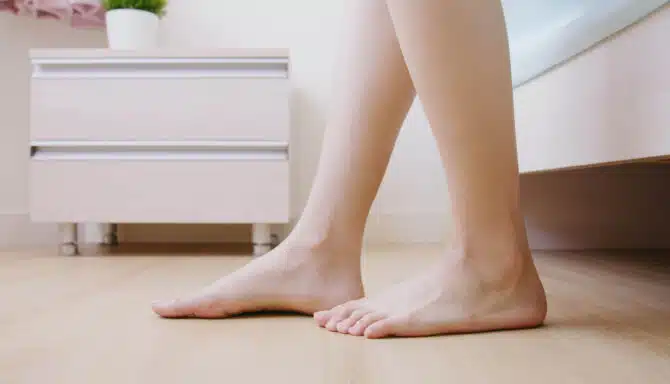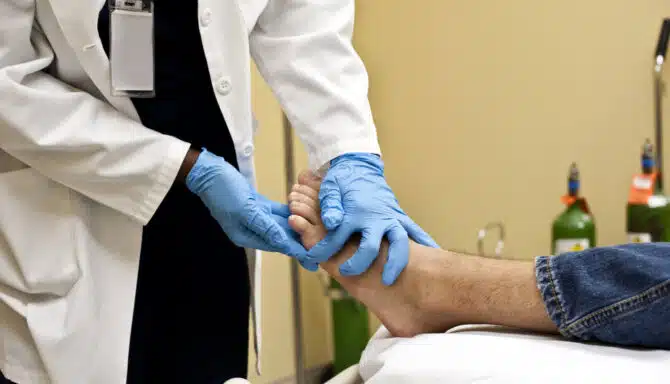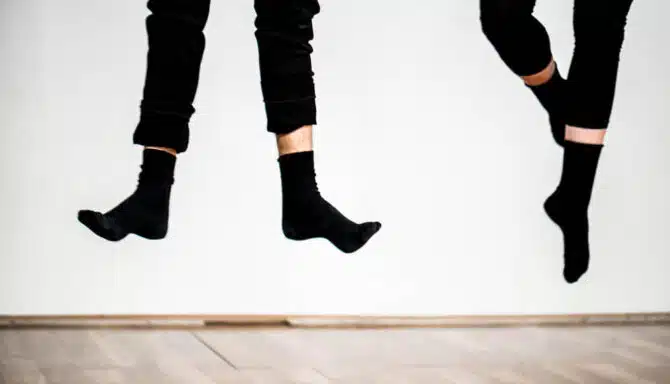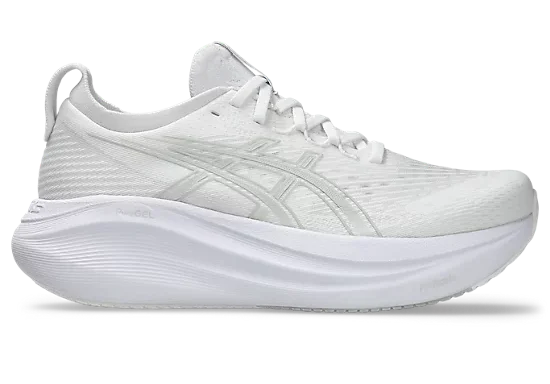You may not realize you have calluses on your feet until you take a closer look. Maybe you decide to swap your pair of sneakers for sandals and see the yellowish skin around your heel. Maybe you start to massage a sore foot and then feel patches that are dry and rough. It’s common for them to form right under your nose — or in this case, under your feet, without any notice.
What is a callus?
Calluses appear on the bottoms of your feet when they are dealing with lots of friction and pressure. As a reactionary measure, the skin thickens and hardens, acting as a protective hide. Here are some common situations that create a lot of friction on the bottoms of your feet:
Wearing shoes that are too big for your feet
Wearing shoes that are too small for your feet
Not wearing socks with shoes
Wearing ill-fitting socks
Walking on the floor barefoot
What is the difference between a corn and a callus?
Calluses are hardened skin that appears on the soles of your feet and usually has the same thickness throughout. Corns tend to appear on the tops of your feet or toes along with boney prominences. In comparison to calluses, foot corns are much smaller in size and because they have a hard, deep centre, they are usually painful to the touch. They are also caused by friction from ill-fitting shoes and poor foot care.
If you have corns, you should see a chiropodist specialist in Toronto to have them safely remove the growths with a surgical scalpel, especially when you are living with diabetes or coronary disease. To help slow down their return, a chiropodist may recommend offloading pads or custom foot orthotics depending on the circumstance.
How do you get rid of it?
In some cases, you can remove foot calluses at home by soaking your feet in warm water at night to soften the skin, making sure to towel them off completely once you’re done. Then, use a callus remover to shave some of the dry skin off in the morning. Do not get overzealous with the shaving. You don’t want to break the skin.
If you have diabetes, you shouldn’t remove the callus on your own. You should see a chiropodist to perform careful foot callus removal so that you don’t have to worry about accidentally cutting or scraping the skin. A small mistake could prompt a serious foot infection. Here at the Feet First Clinic, we will prioritize your health and safety.
If the callus is painful, uncomfortable, or resurfacing often, you should also visit the clinic for foot callus removal.
Getting your calluses removed is one step. You also must make sure you fix the issues that got them to show up in the first place:
Get shoes that fit properly
Get socks that fit properly
Don’t walk around barefoot
It’s incredibly important for you to get supportive shoes that fit, especially if you are an avid runner or jogger. The friction from physical activity will make you susceptible to this condition, along with other painful foot problems caused by frequent friction and improper footwear.
The wrong shoes can lead to blisters, blackened toenails, arch pain, knee pain and shin splints. You can click here read more about common fitness injuries that can be alleviated through careful treatment, orthopedic footwear and custom orthotics.
Most calluses won’t seem like a big deal. They will often look and feel unpleasant to touch. They appear harmless — but they are warning signs telling you that your footwear and your foot care need to improve as soon as possible.
